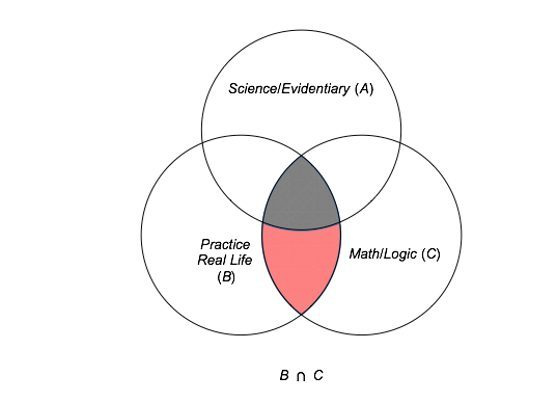
Role of the Underwriter in the age of Data & Analytics
While insurance principles have been used for centuries, the industry has been quick to adopt new technologies, including investing in insurtech startups to benefit from disruptive ideas. Many of the developments in insurance that attracts headlines is around the impact of analytics on automation, distribution channels or transaction models on growth and profitability.
Amongst the disruptions, we believe less attention has been placed on impacts on the role of the underwriter, a core part of industry. Therefore, this article explores and discusses:
- The evolution of underwriting role to date
- The extent and timing of digital disruption to general insurance underwriters
- How firms can best leverage its underwriters amidst the disruptions
Evolution of underwriting role to date
Underwriters have long been essential in traditional insurance contracts, dating back to the 17th century ‘Lloyd’s of London’s’ marine market. Underwriters were subject matter experts and had to supplement scarce historical data with large amounts of personal intuition and experience.
Over time, more advanced techniques were adopted. These techniques include event probability curves, accumulation limits and hazard rating. These only represent decision-support tools – in many cases underwriters still applied large amounts of judgement into the ‘art’ into the risk selection process, particularly in large, complex risks and special insurance. This not only encompasses technical risks, but the commercial realities of the insurance market.
General insurance personal lines of insurance, such as travel and motor, the role of the underwriter has seen the largest disruption. This is caused be availability of large volumes of data and growing prominence of digital distribution channels such as comparison websites, online direct to consumer sales/service and claim journeys.
Underwriting is therefore significantly more efficient and the role now marries actuarial, portfolio and product responsibilities. Much time is spend considering the detail of policy wordings and understanding how products compare to competitors. Underwriters also consider emerging factors such as increasing use of telematics (and other ’big data’), and other technologies that will change the insurance market, such as driverless cars.
Looking ahead: the anticipated timing and extent of disruption
We believe that the trends seen to date will continue. Underwriting will continue to become more quantitative and statistical, But the timing and extent of tech driven disruption is not uniform across the general insurance spectrum.
Large Commercial risks
It is unlikely for models to completely replace expert judgements. This is due to the inherent complexities and non-homogenous nature of the risk landscape within the commercial realm, where increasingly intricate supply chains and interdependencies are chronically under-appreciated, which was evident during COVID-19 pandemic.
Disruptions are likely to be gradual. Risk selection will be much more precise, as drones, satellite imagery and other high-resolution mapping techniques are deployed to better appraise risk down to granular location level. This gives much more accurate results for perils such as flood. Arming underwriters and actuaries with such data will enable both improved risk selection and more nuanced product design.
Personal insurance lines
We believe that disruption will be more radical in personal lines as entire business models (and its underwriting processes) could be uprooted. For example, business models involving community underwriting through the formation of insurable groups (for example, startups such as ‘Friendsurance’), Internet of Things (IoT) and Reward & Recognition programs represent fundamentally different approaches to traditional underwriting. The self-learning nature of these transactions effectively remove the need for underwriters.
The speed of change will ultimately be demand-driven; the level of consumer education and uptake of these products will ultimately determine scale and timing of disruption. Here, formidable market obstacles need to be first overcome, especially the prevailing sentiment of data protection/privacy, consumer apathy and high renewal rates.
For existing firms such changes can be a challenge when confronted by legacy IT systems and data analytics talent shortages. This is particularly challenging as seamless ‘e-commerce’ style technology infrastructure and personnel need large and bold strategic investments. Significant changes will also have a direct impact on existing core business models, so there are risks in moving both too fast and too slow.
How firms can best leverage its underwriters amidst the disruption
Underwriters need to develop new skills to thrive in data and analytics age. Although industry or government supported grants aimed at upskilling existing resource are well meaning, the inherent complexity of data mining techniques keeps barrier to entry high. Furthermore, large portfolios that were distributed across a team of underwriters are now manageable by a single data scientist or underwriter, so there are risks for those who cannot adapt to changing needs.
Despite this, the tech revolution still does not necessarily need a complete workforce revamp. We contend that firms that can bring their employees along the journey rather than feeling ‘left-behind’ will achieve significantly improved outcomes through more buy in and engagement.
The key to success lies in bridging across gaps in interdisciplinary communication, especially between data scientists and underwriters. When they are too far apart, there is insufficient common ground for each to understand the other (see schematic below).

Transformation projects will run the risk of failure, often with common causes. For example:
- Data scientists might lack the understanding of insurance value chain and business processes might build models/tools too opaque or unfit for purpose
- Conversely, underwriters lack the basic data literacy for meaningful discussions with their data science counterparts who are not subject matter experts
These communication gaps and mismatch in skillset can be bridged by:
- Recognising the role of the ‘data translator’, who can link insurance value chain/business domain knowledge with data science/technology concepts. However, these jack-of-all-trade skillsets are rare and command high salaries
- Upskilling staff in data literacy and new technologies, especially those new to insurance industry on the insurance value chain. This ensures a constant stream of talent and the pivot away from “years of experience” as the main driver of insurance expertise
In conclusion, traditional underwriters are repositories of risk knowledge and firms cannot afford a ‘stand-off’ between traditional underwriting and heavily quantitative data science techniques. Senior leaders need to carefully manage future change by providing a smooth transition path and extend support to traditional underwriters seeking varied roles going forward depending on the extent of tech driven disruption to their existing business models.
CPD: Actuaries Institute Members can claim two CPD points for every hour of reading articles on Actuaries Digital.






